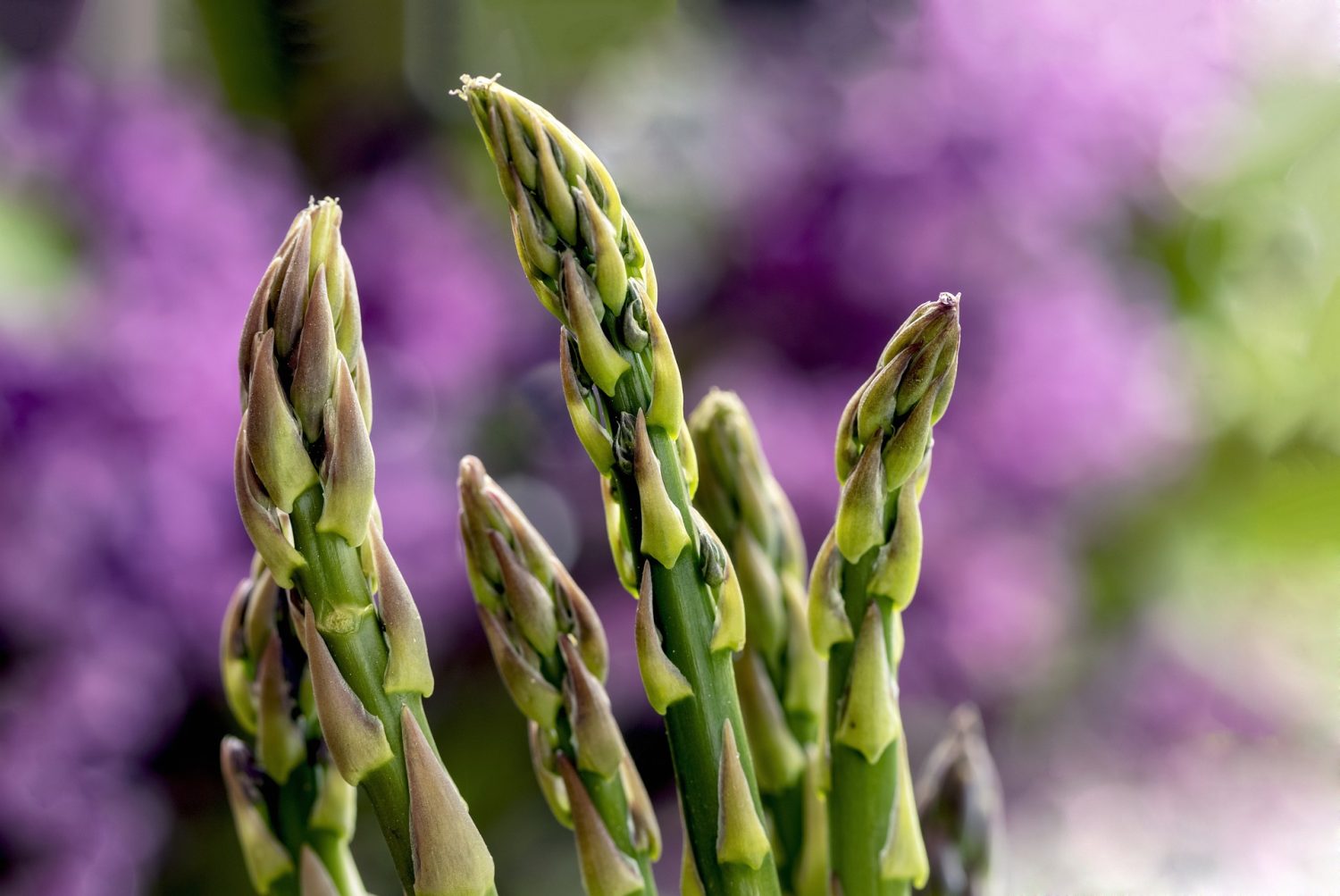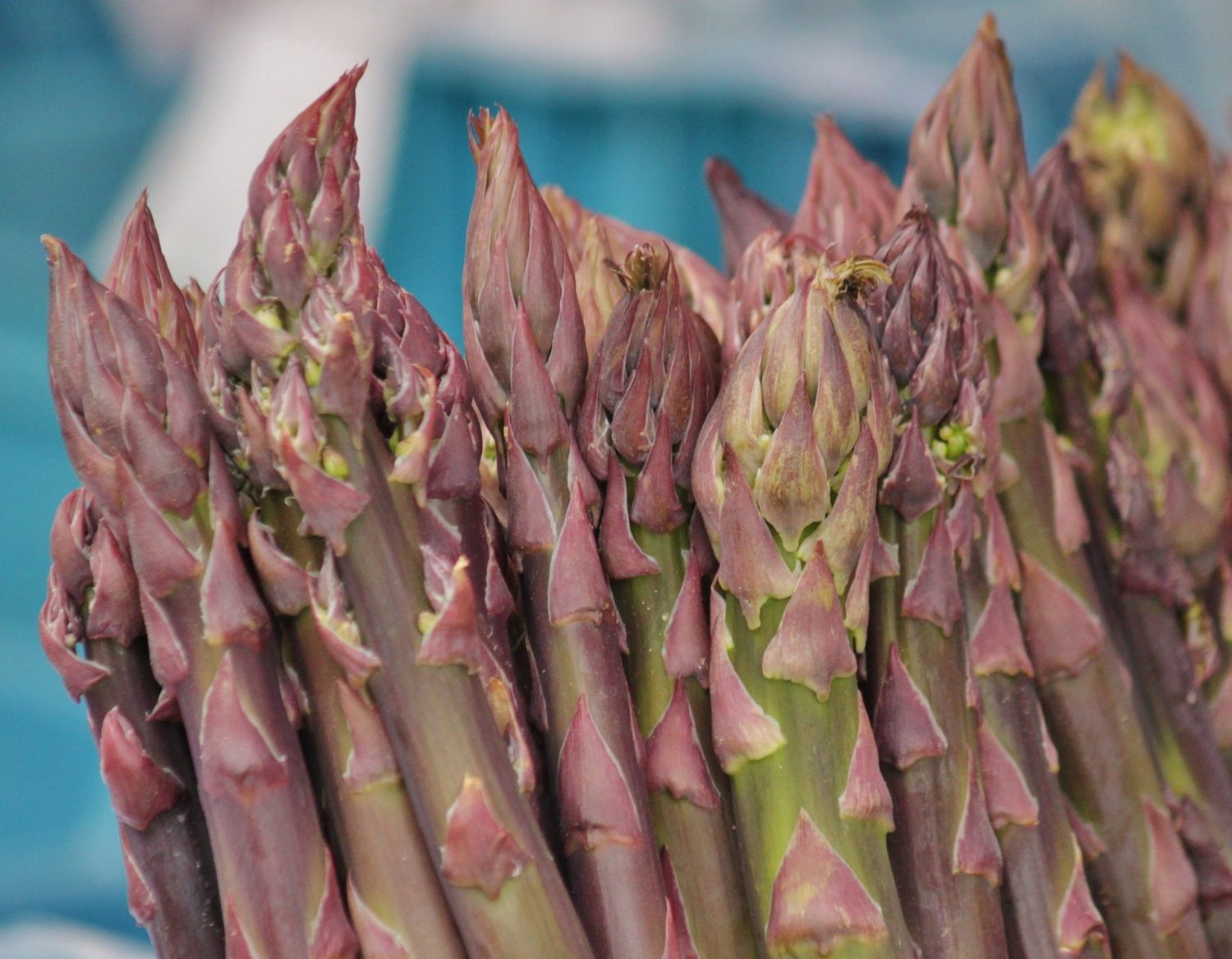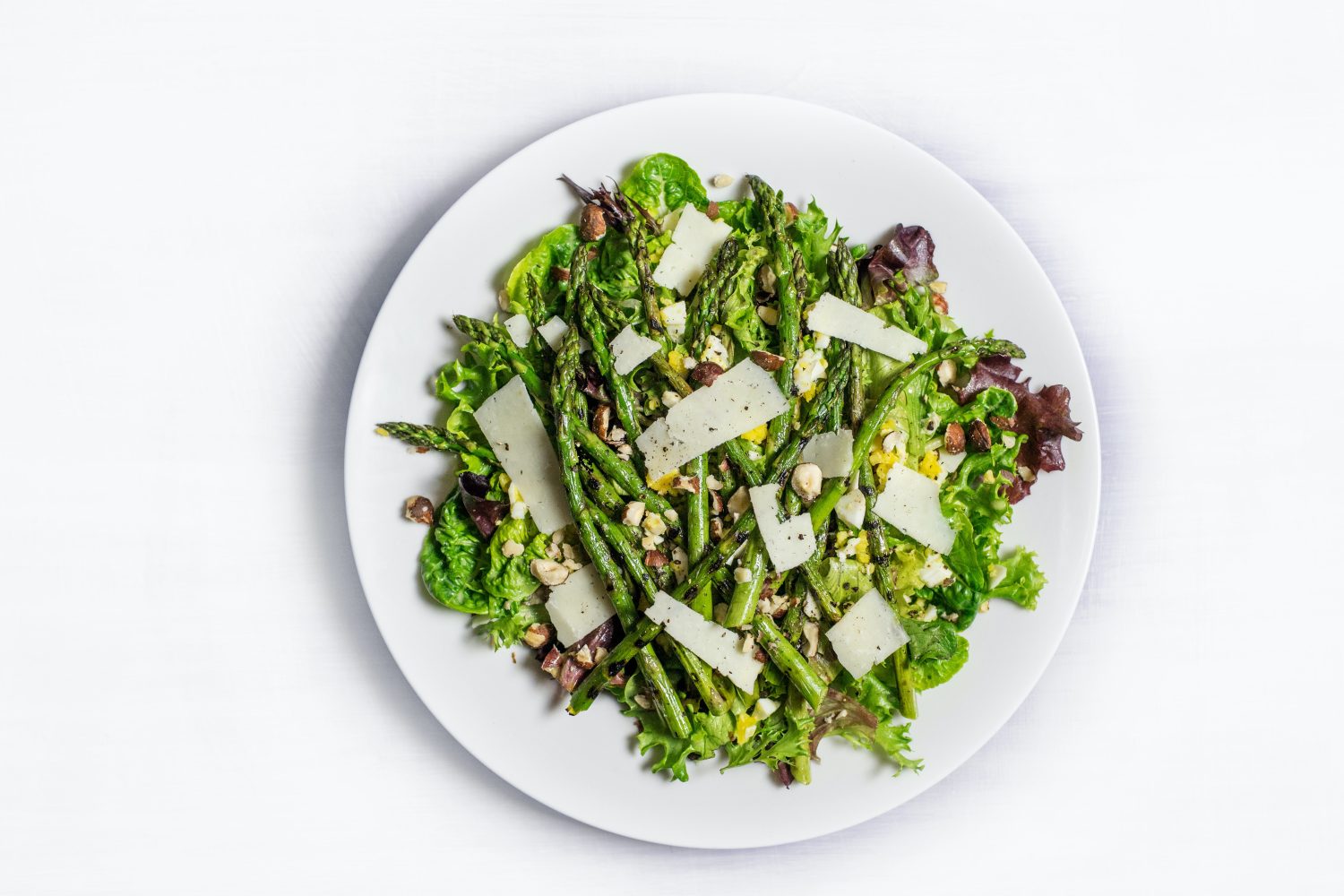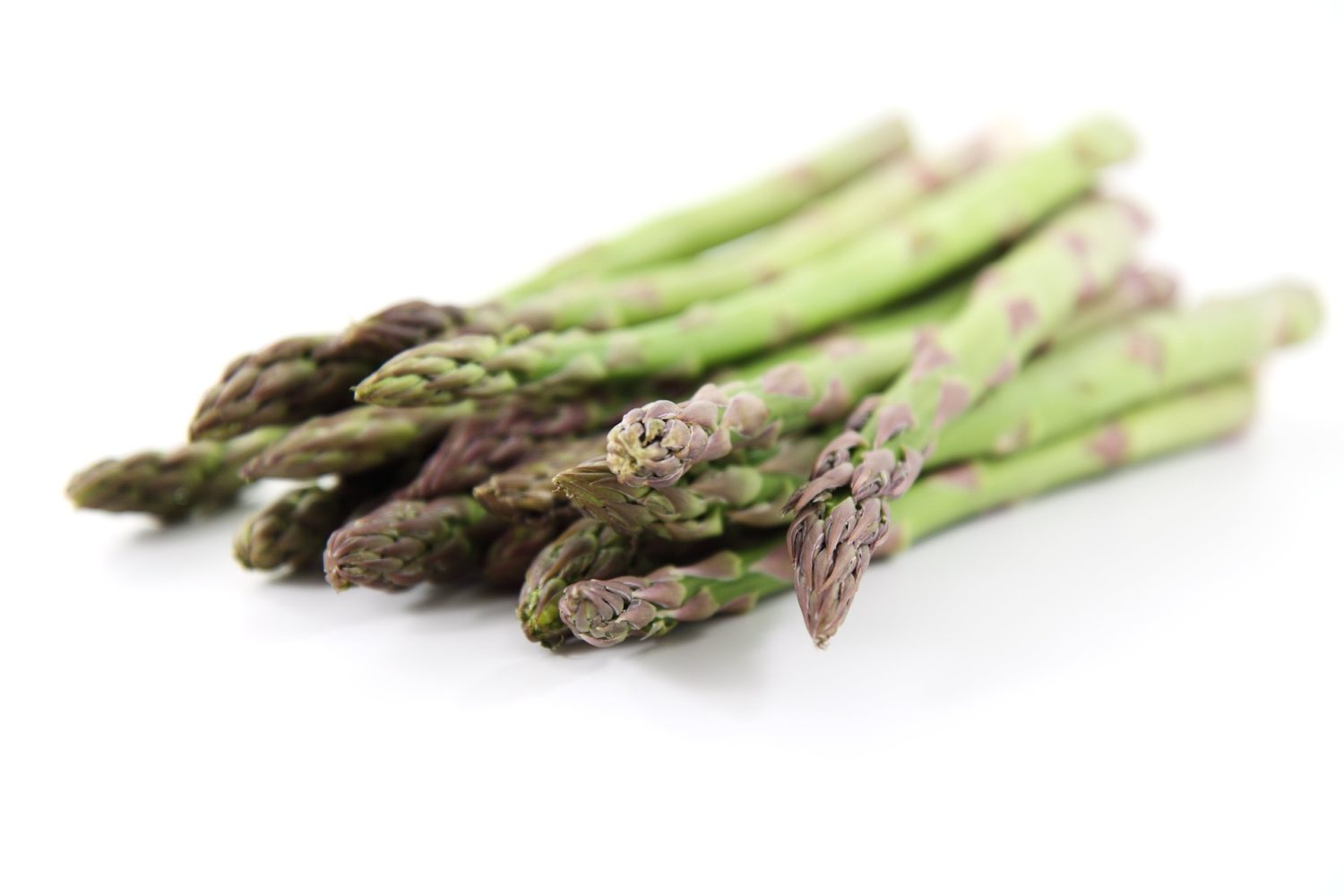Here’s a fun fact that few people know. Asparagus is unlike many of the other crops that I’ve grown, because it simply grows straight out of the ground.
That’s right: those stalks you love to munch on burst right out of the ground like tall, spindly towers of goodness. It’s the wackiest thing, and it only makes me love them more.
In case you’re unfamiliar, asparagus is a springtime crop known for its earthy flavor profile. It’s often used in pasta and frittatas, but there’s a slew of other uses for this unique veggie.
Read on for six different ways to cook asparagus, plus its different uses and flavor profiles. It’s time to add this veggie to your weekly produce list!
What Does Asparagus Taste Like?

Well, I hate to say it, but asparagus tastes like asparagus!
But let’s get more specific than that: what does asparagus actually taste like?
Asparagus has a mellow and earthy flavor, most often compared to broccoli or grass. While it’s not sweet, it’s not sour either, though it does become so once it’s past its prime.
Since asparagus is earthy and subtle, it pairs well with stronger flavors, like lemon and mustard. My personal favorite toppings for roasted asparagus are lemon juice and dried oregano.
Now that we’ve got acidic flavors in the mix, it shouldn’t come as a shock that asparagus and seafood are best friends! Pair it with scallops or salmon for a lovely meal! Of course, it’s a classic “steak and potatoes” vegetable as well, but that’s for a different occasion.
You could even add cheese, such as Asiago, to elevate it. Or, if you want to impress the family during game night, wrap those suckers in some bacon and let them cook in the grease. Now, that’s a game changer.
Different Types of Asparagus
Believe it or not, asparagus grows in three distinct and beautiful colors: purple, green, and white. And, even crazier, they all taste different! How cool is that?
White

White asparagus is a true rarity in North America. It’s most often grown in Europe, specifically in Germany where it’s a beloved delicacy.
So, what does white asparagus taste like? This variety is a little sweeter than its green counterpart, but far more difficult to grow.
To achieve its pristine white complexion, it has to be grown without any sunlight. No sunlight means no photosynthesis, so the asparagus can’t produce a green pigment called chlorophyll. Now, growing plants without any sunlight is tough, hence the hefty price tag.
Overall, white asparagus is more tender than its green cousin, aside from its tough bottom ends. You must peel the lower half before eating them, either raw or cooked.
Purple

Purple asparagus is also uncommon in the States, except for at local farmers’ markets and specialty grocery stores. It originated in Italy thanks to some experimental farmers!
Renowned for its sweeter and nuttier flavor, purple asparagus almost tastes like artichokes or barley. The added sweetness is backed by science: purple asparagus has 20% more sugar in its stalks than the green and white varieties.
Interestingly enough, they aren’t purple all the way through. The flesh of the asparagus is green, while only the skin is purple.
However, when exposed to heat, they do turn green or darker violet.
If you want to preserve their color, you can eat them raw or blanch them.
Green

Last but not least, we have the classic green asparagus! You can’t go wrong with this one.
This perennial flowering plant is harvested in the springtime before it has the chance to mature. Its shoots are the fibrous green veggies we all know and love.
There’s much debate as to where asparagus originated, since it can be found in the wild just about everywhere!
Fun fact: though the stalks are completely edible, the fruit is not. Once fully mature, asparagus shoots produce flowers and toxic red berries. The more you know!
How to Cook Asparagus
No matter which cooking method you try, preparing asparagus is always the same.
After washing your asparagus, snap off the ends. You can either do this by cutting off the tough, woody bases or by literally snapping them off.
They are too tough to chew and will not tenderize while cooking, so there’s no point in keeping them around. Throw ‘em in the compost, and get cooking!
Roast

Since asparagus can be tough to chew (or stringy), I love roasting them since it ensures a thorough cook.
Combine a high temperature and a short time for a nice char and even roast. Or, you could let it go for longer at a lower temperature to prevent any burning. To each their own!
Preheat your oven to 400°F while you prep your asparagus. Season diligently (at least some salt and pepper) and throw them in there for 5-10 minutes, tossing halfway.
Once they’re lightly browned and tender, they’re ready to go! Of course, if you’re like me, I let them cook a little longer because I love that char!
Blanch

If you want snappy asparagus, say for a tossed salad or pasta dish that needs texture, blanching is the avenue for you.
Grab a pot and fill it with salted water. While you wait for it to boil, fill a separate bowl with ice water. Once the water’s boiling, throw in your prepped asparagus and let it cook for 1-3 minutes.
You’ll know they’re done once they’re brightly colored and tender.
Shock them in the ice bath to halt the cooking process (if you’re not eating immediately) and preserve their snappy deliciousness. Serve and enjoy!
Sauté
Any butter fans out there? If so, you’ll love this take on asparagus.
After washing and trimming your bunch, cut them into manageable pieces. Heat oil or butter in a pan and throw your prepped asparagus in there, tossing them as they cook.
Let them sauté for about 3 to 5 minutes, or until they’re a little bit browned. Don’t forget the salt and pepper!
Grill

If you love charred food, this is the option for you.
After cleaning your grill, turn it to high heat or 350-400°F. Prep and season your bundle of asparagus, and then lay them out evenly.
Lower the lid and cook for 5-10 minutes, rolling them halfway through for lovely grill marks.
Once they’re fork-tender and charred, they’re ready to go!
Steam

Crispy and bright green, this method is always a crowd-pleaser.
Grab a pot and a steamer basket, and fill the bottom with an inch or two of water. Bring it to a boil, then put the asparagus inside the basket.
Cover and cook for 3 to 5 minutes, or until they’re fork-tender.
Then, season as you will (butter, anyone?), and serve!
You could also steam them in a shallow pan if you don’t have a steamer basket available.
Air Fryer
Yep, you can cook asparagus in the air fryer! And it just might be the easiest option on this list.
After prepping and trimming your asparagus, coat them in olive oil, salt, pepper, and your seasonings of choice. Then spread them out in a single layer in your air fryer’s basket, making sure not to overcrowd them. Depending on how much asparagus you have, you may have to cook them in batches.
Set the fryer to 400°F and cook for 7-10 minutes, or until lightly browned and tender.
Top tip: If you’re looking for a cheesier experience, grate some parmesan cheese on top of the asparagus before turning the fryer on. You can thank me later.
How to Select the Perfect Asparagus

Grabbing the perfect bunch of asparagus all depends on your needs. Planning on cooking it tonight? Then you have a little more wiggle room.
But, if you know you won’t be cooking it for a few days, spend an extra minute or two picking the perfect bunch.
The best way to check is to use your senses – except for taste, of course.
First things first, asparagus should have little to no odor. If you can smell something–especially something sour or sulfury–it’s going bad.
When asparagus is extremely bendy, it’s also on its way out of town. It should be able to bend a little bit, but not child-gymnast-level-bendy.
Texture-wise, the tips should be firm, not as sturdy as the base, but not mushy either.
For coloring, the asparagus should be green. If the tips are discolored or yellowing, it’s not a great batch.
Finally, touch it! If it’s slimy, that means that bacteria is growing on the surface and excreting waste, hence the slime. Yuck.
How to Store Asparagus

Asparagus love moisture. They grow naturally on riverbanks and near saltwater, so it only makes sense that you’d store them in water too!
They can last up to seven days in the fridge if you store them correctly, though most only last five days.
After trimming your asparagus, stick the cut ends into a cup or jar filled with an inch or so of cold water.
The extra water keeps the ends moisturized and happy, while the tops remain dry, so they don’t mold.
Cover the tops in saran wrap or a plastic bag, and then stick that whole shebang into the fridge, preferably in the crisper drawer.
If you wash them first, they are more likely to go bad. You can wash them, so long as you dry them thoroughly before storing them in the fridge.
Health Benefits of Asparagus

Asparagus is chock-full of vitamins and fiber, and a great addition to most diets!
Asparagus is a known prebiotic, which makes it ideal for gut health and digestion. With high quantities of flavonoids and folate, asparagus is great for those hoping to conceive as it can help those babies grow stronger!
Plus, it’s a great source of vitamins C, E, and K, and a bit of potassium too.
Purple asparagus has tons of antioxidants called anthocyanins that could reduce your risk of heart disease!
But yes – it may make your pee smell due to its asparaguisic acid contents. Luckily, the odor is temporary and harmless!
FAQs
What Does Bad Asparagus Taste Like?
Very sour and awful. You should be able to tell it’s bad before taking a bite, though, based on discoloration, texture, and smell.
Should You Use Thick or Thin Asparagus?
When buying asparagus, aim for stalks that are either pencil-sized or a little thicker. If they’re super wide and thick, that means they spent more time growing and ripening, which isn’t always a bad thing. However, it does mean they will be more difficult to cook and quite chewy.
What Vegetable Does Asparagus Taste Like?
I would say it’s a tie between broccoli, grass, or a mixture of them both. Throw in some earthy flavors and you’ve got it!
Conclusion
Not only is asparagus healthy and vitamin-rich, but it’s also a delicious and versatile veggie that can add some pizzazz to your meals!
Serve it with pasta, in a stir-fry, or with your favorite cut of fish, and rejoice in the earthy goodness that is asparagus!
Happy cooking!
Dolly


